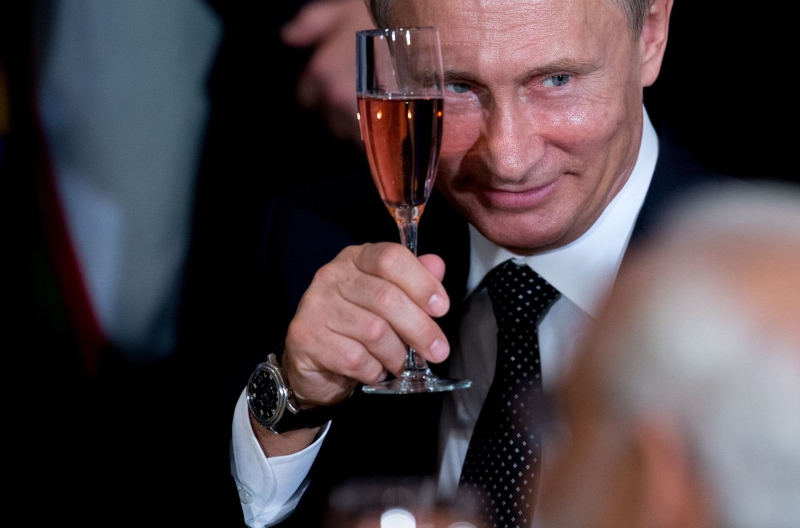Despite European sanctions on high-end wine, the Kremlin continues to buy hundreds of bottles worth tens of thousands of dollars each. Alexei Repik, a friend of Putin’s daughter Ekaterina Tikhonova, is in charge. Rare wines, no longer sold on the open market after the war, are now available in luxury restaurants owned by Repik and his partner Ivan Sibirev, top manager of companies owned by oligarch Gennady Timchenko, Putin’s close friend. Putin’s friends import wine under the guise of “certification samples.” To what extent customs officials are involved in circumventing the sanctions is an open question.
After the Russian invasion of Ukraine, the EU imposed a ban on shipments of wines costing over 300 euros to Russia. Unlike the full embargo on Australian and US wine imports, the European measure looked like a symbolic restriction since the share of such wines was less than 1% of total shipments to Russia. That's how the European regulator tried to deprive the Russian oligarchs of the Grand Cru of Burgundy and Bordeaux without throwing a spanner in the works for ordinary producers. But in practice, this measure led to the emergence of grey imports and a new type of importer.
At the end of last year, Ryatiko, a little-known company belonging to Alexey Repik, the owner of the pharmaceutical giant R-Pharm, imported to Russia some of the world’s most expensive wines. Almost two hundred titles of the rarest wines (800 bottles in total) made their way to Russia in circumvention of the EU sanctions. Only the purchase prices of dozens of wines exceed one million rubles per bottle. And it's not just the exorbitant prices, but also the fact that it's not so easy to get these wines.
The market for premium wines differs from the cheaper segment not only in price, but also in the existence of wine allocation. The demand for wines from top wineries exceeds supply many times over. This disproportion can be most clearly seen in Burgundy. For example, the iconic Domaine Leroy of Burgundy produced only 608 bottles at Musigny vineyard in 2007 – less than one pallet. The world's most respectable distributors, from Great Britain and the United States to Japan and Hong Kong, compete for the right to buy this wine. Therefore, the owners of such wineries sell them on a quota or allocation basis. An outside buyer who wants to buy wine from a château or a domaine will simply be refused and referred to a distributor.
A typical example is described by Pyotr Aven in his book “Berezovsky's Time.” Vladimir Zhechkov, owner of the Premier SV advertising agency and creator of the Bely Oryol group, was teaching Boris Berezovsky the finer points of wine culture.
“Boris, do you know about wine?”
“Are you serious? Of course, I do.”
“Borya, what's the coolest wine?”
“Why, Petrus, of course.”
“Boris, you don't know a thing about wine!”
And Zhechkov starts lecturing him about Romanée-Conti, a wine that's impossible to buy, but “here I have a bottle, I'll let you try it.” Borya calls someone and demands that a bottle of Romanée-Conti be brought to him immediately.
But the wine is nowhere to be found.”
Given the above, the two hundred deliveries by the new Russian importer look absolutely fantastic. The Telegram channel “Drunken Master” was the first to draw attention to the declaration of the most expensive wines in the world. The authors of the alco-tabloid were surprised by the contrast of old and new deliveries by a certain Ryatiko LLC. The company, which previously imported various products from Japan – from pickled ginger to muscle stimulants – suddenly registered declarations for the import of ultra-expensive Burgundy.
According to the Federal Register of Alcoholic Products, since November 23, the supplier which had recently been dealing with soy sauce imported almost two hundred top wines of Burgundy, Bordeaux and Piedmont. Of the five Bordeaux châteaux, which received the highest status in the 1855 classification, Ryatiko imported all five (Chateau Haut-Brion, Chateau Lafite Rothschild, Chateau Latour, Château Margaux and Château Mouton Rothschild) in three days. Domaine de la Romanée-Conti, which Madame Pompadour, Louis XV's mistress, had adored, came to Russia again. The legendary Henri Jayer, whose founder had led the post-war revival of Burgundy, was also supplied. The wines of these producers make up the top of the most expensive wines in the world.
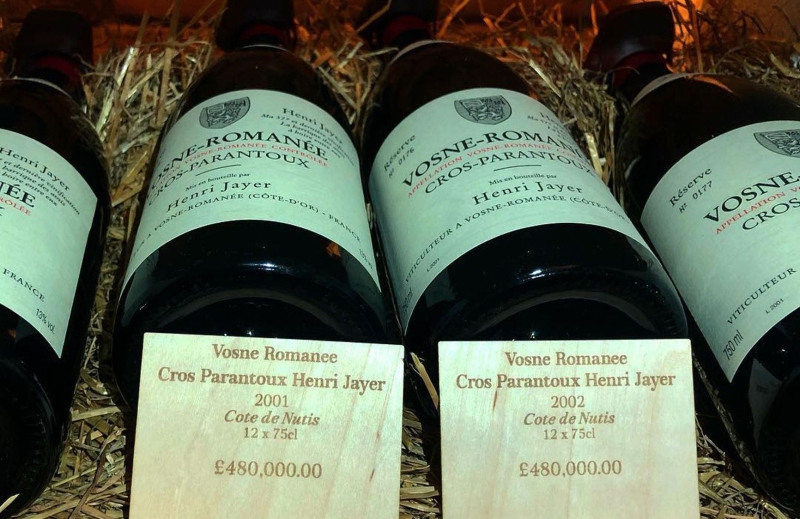
In part, a similar set of vintages can be obtained from a few Russian wine trading companies like Simple or DP-Trade, who have been working on their international reputation for decades. But if ordinary importers have to be content with the recent vintages, the Ryatiko collection includes unique 20th century vintages. The abovementioned Henry Jayer had been producing Richebourg wine from the eponymous vineyard at the rate of just over a thousand bottles per year. 1987 was the final year of production, and in 2006 Henri himself died. These two events pushed prices into the stratosphere. A bottle of Richebourg from the 1984 vintage sold for £183,750 at Christie's in 2020. And in 2022, the former soy sauce importer brought ten bottles of Henry Jayer to Russia, including a Richebourg of the 1984 vintage. Ryatico's delivery list included Chateau Haut-Brion 1929, Château Cheval Blanc 1947, Chateau la Mission Haut Brion 1961 – these names and vintages are astounding.
According to an estimate of Ryatiko's imports based on the world's average prices available from WineSearcher, the company imported 3.902 million euros', or 283.33 million rubles' (at the current exchange rate) worth of wines to Russia in November and December 2022 alone. If the purchased bottles were bought in good condition and the seller had a guarantee of their origin, this price could be much higher. We are talking about the purchase price which does not include neither the delivery costs nor taxes and excise duties. The money could have been used to install warm toilets in 300 Russian schools, and given that it was only spent on two months' supplies, in annual terms it would have been enough for 2,000 Russian schools, where there are still no heated toilets.
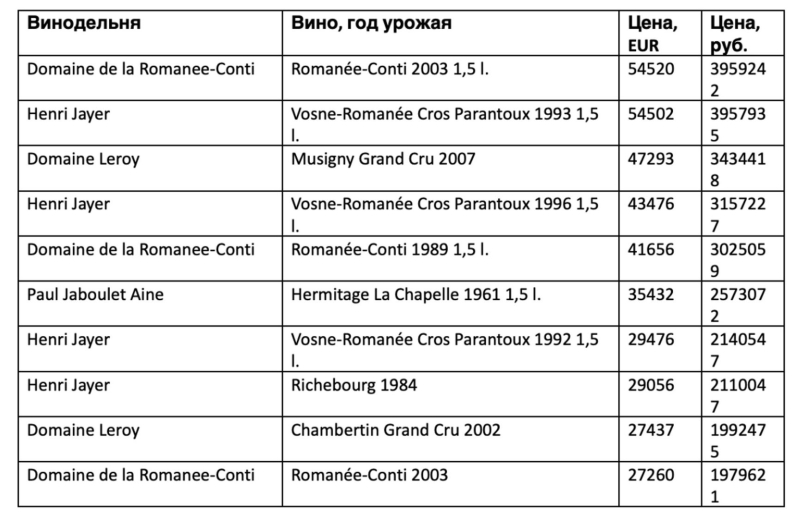
Where did a company with a registered capital of ten thousand rubles ($145) get hundreds of millions to buy luxury wines? The owner of Ryatiko is Alexey Repik, whose fortune is estimated at $1.4 billion. R-Pharm is the largest pharmaceutical manufacturer in Russia and receives most of its money from the government. The Federal Antimonopoly Service had suspected a cartel collusion between the Ministry of Health and Repik, which led to higher medicine prices, and had even conducted an unscheduled inspection at the Ministry. But further investigation actually ended in nothing.
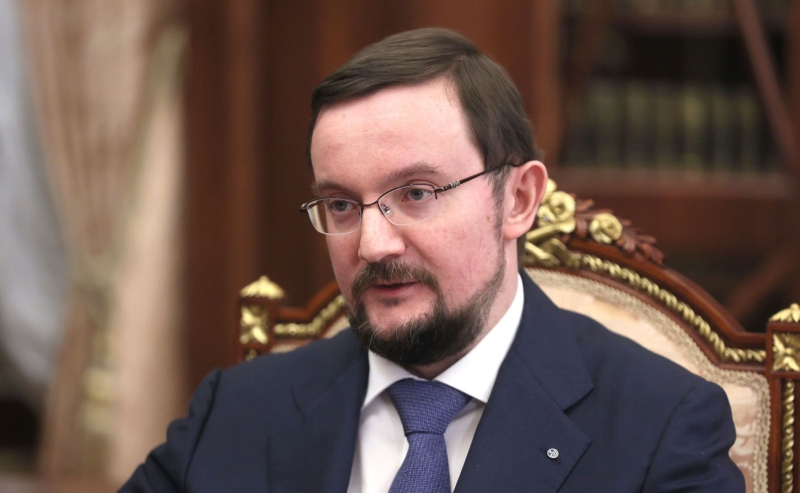
Repik's rock-solid position may be in part explained by his company's connection to Vladimir Putin's family. According to an investigation by Important Stories and Der Spiegel, Repik's offshore company owns a Bombardier Global 5000 business jet with the tail number M-FINE. The jet was used by Ekaterina Tikhonova, Vladimir Putin's youngest daughter. Tikhonova and Repik are not just connected by a business jet. Natalia Popova, a longtime friend of Tikhonova and her deputy at the Innopraktika Foundation, is married to Kirill Dmitriev, who heads the Russian Direct Investment Fund. On the one hand, Dmitriev has a close relationship with Tikhonova and was a guest at her and Kirill Shamalov’s wedding ceremony. On the other hand, the state fund he heads has generously invested in Repik's business. For example, in 2020, RDIF and R-Pharm announced a joint investment of 4 billion rubles in the development and production of biotech drugs and vaccines to combat coronavirus.
You can't find wines worth millions of rubles a bottle in Russia on the open market. But you can find them in restaurants owned by Alexey Repik and Ivan Sibirev. Previously, Sibirev was the general director of Stroytransneftegaz, one of Gazprom's largest contractors owned by Putin's friend Timchenko. In 2017, Sibirev opened Wine & Crab on Nikolskaya Street. The establishment became one of Moscow's most upscale restaurants: cuisine by the skilled chefs, the Berezutsky brothers (not to be confused with the football players), direct shipments of seafood by plane from the Far East, and a wine list containing the world’s best wines. A second Wine & Crab establishment soon opened in Barvikha, followed by the Berezutsky brothers signature restaurant, Twins Garden, in 2019. The restaurants have been internationally recognized: in October 2021, Twins Garden was ranked 30th in the World's 50 Best Restaurants and was awarded two Michelin stars in the same year.
Alexei Navalny's team discovered in their investigation that Sibiryev's partner in the restaurant business was Alexei Miller's stepdaughter, Svetlana Kuznetsova. Her husband Alexander Kuznetsov is the general director of Gazprom Komplektatsiya LLC. In December 2019, there were reports of the sale of Twins Garden to Alexei Repik, who became the company’s sole founder in 2020. Meanwhile, Sibirev and Kuznetsova kept the ownership of the Wine & Crab restaurants.
The high cuisine of the Berezutsky brothers and the equally high demands of the owners demanded appropriate wine accompaniment. The sommelier of Wine & Crab restaurants, and in the recent past of Twins Garden, is Anton Panasenko, Russia’s best sommelier in 2003. The demand for top wines spawned a new line of business in just a few years. At first, the sommelier negotiated allocations with wineries, using third party importers for technical imports. Meanwhile, the operation kept expanding: he opened a wine boutique, and then registered his own company, Burgundy LLC, in 2021. Along with Panasenko, the company was co-founded by Konstantin Nureyev, acting deputy general director of Stroytransneftegaz and a colleague of Ivan Sibiryev.
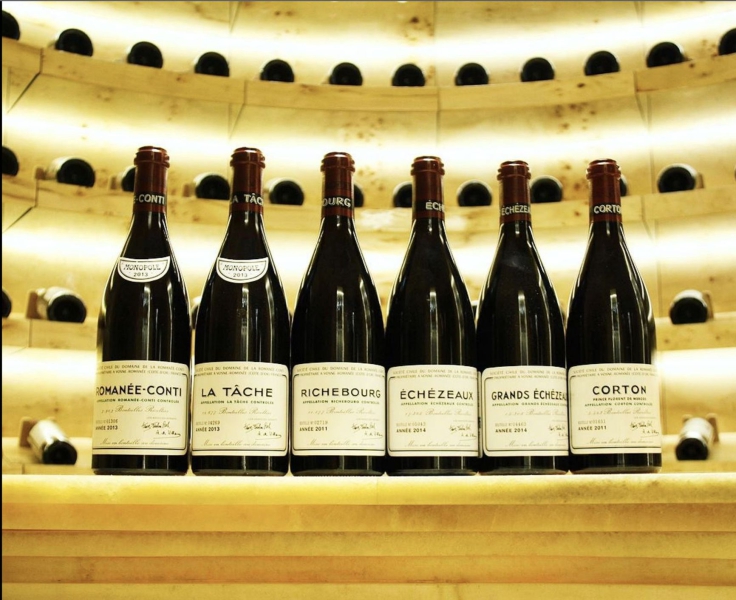
Anton Panasenko's connections in the wine world helped him gather a portfolio of top wineries from Burgundy, Bordeaux and Champagne. The list of wine producers on Burgundy LLC's price list largely matches Ryatico's recent imports. G. Roumier, Méo-Camuzet Frère & Soeurs, Domaine Ramonet, Emmanuel Rouget – the companies share almost a dozen partners. Probably it’s Panasenko's business contacts that enabled the supplier of pickled ginger to get hold of top wines sought after by collectors from all over the world. Anton's close acquaintance with two Burgundian winemakers is evidenced by a dinner at Twins Garden Restaurant in 2019. Jean-Claude Ramonet, owner of the world-renowned Domaine Ramonet, and Guillaume Rouget, son of Emmanuel Rouget, personally presented their wines to the restaurant’s patrons. In addition to his father's domaine, Guillaume also represented Henri Jayer – the legendary winemaker mentioned above was his father's uncle and mentor. In December of the same year, Anton dined with Jean-Claude Ramone once again, this time in Burgundy, where the Frenchman opened for him a bottle of Chateau Mouton Rothschild 1965, his year of birth.
The Kremlin oenophiles would not have been able to purchase wine without the help of European companies, which helped them circumvent the sanctions. It’s evident that Ryatiko LLC used the services of a European intermediary, who helped with the collection of orders from various producers and with the execution of documents. All the deliveries of premium wines were made under a single contract, No. 12/6/22 dated June 12, 2022. In parallel, payment for the wines of dozens of different producers was made under two invoices, No. 2 dated June 30, 2022 and No. 3 dated August 12, 2022. It is likely that the same intermediary sent samples to S.A.S. SOFRALAB at Bar sur Seine of 1 bis avenue Paul Portier BP 46, which issued test certificates for all the wines purchased by Ryatiko on June 3 and 5. These facts suggest that the same company provided services to Ryatiko in connection with the placing of orders and the execution of documents. An enquiry sent from The Insider to the lab went unanswered.
The rest was a technical matter. The overwhelming majority of alcohol beverages imported to Russia go through the Baltics. Customs clearance rules require that excise stamps be affixed to alcoholic products before they are brought into the territory of the Russian Federation. For this purpose, most importers rent excise warehouses in Latvia, Lithuania, and Estonia, where they glue excise stamps and Russian counter-labels onto imported bottles. After the outbreak of the war, the government began to experiment with affixing the stamps on Russian territory, but most of the importers continued to use the old system. The inconvenient scheme proved useful for circumventing the sanctions: respectable European producers ship their products to Europe, and the entire risk of circumventing the sanctions falls on intermediaries.
How does customs let sanctioned wine through? Specifically, Ryatiko used a creative approached: 22 batches of the most expensive wines were brought in as samples for certification. The size of those batches significantly exceeded the prescribed standard, “no more than 2.5 liters of each type.” Domaine Romanee Conti alone accounted for 78 0.75-liter bottles and 1.5-liter magnums. This indirectly suggests that the customs value of the wines was seriously understated.
The second possibility involves using a European intermediary that can buy wine from a European producer at the market price and then “adjust” the price for the Russian buyer. And the third possibility involves fictitious transfer through the territory of Russia to other Customs Union countries. For example, on paper the goods may be slated for delivery to a Kazakhstani company via Russia. During transit through Russian territory, the Kazakhstani consignee rejects the goods, and the shipping documents are then amended to include a Russian consignee.
A person who is superficially familiar with Russian realities might wonder who would spend millions of rubles on a bottle of wine that can be consumed in a couple of hours. But the answer to this question is well known to Moscow sommeliers. In 2017, the Sobesednik newspaper published a delivery contract entered into between the Kremlin “Catering Combine No. 4” and Telman Ismailov’s AST. The appendix to the contract for the delivery of alcohol beverages for the needs of the State Duma, Federation Council and Accounting Chamber included Romanée-Conti 2001, 2002 and 2005 worth 1.2 million ($17,380), 1.3 million ($18,800) and 1.5 million rubles ($21,700), respectively. The employees of the Sixty restaurant, Europe’s finest restaurant at the time, told about Dmitry Medvedev's banquet in 2014. The restaurant on the 62nd floor of the Federation Tower in Moscow City was closed for the prime minister's banquet. Medvedev chose the most expensive item on the wine list (it turned out to be a Romanée-Conti), saying dismissively, “VTB is paying”.
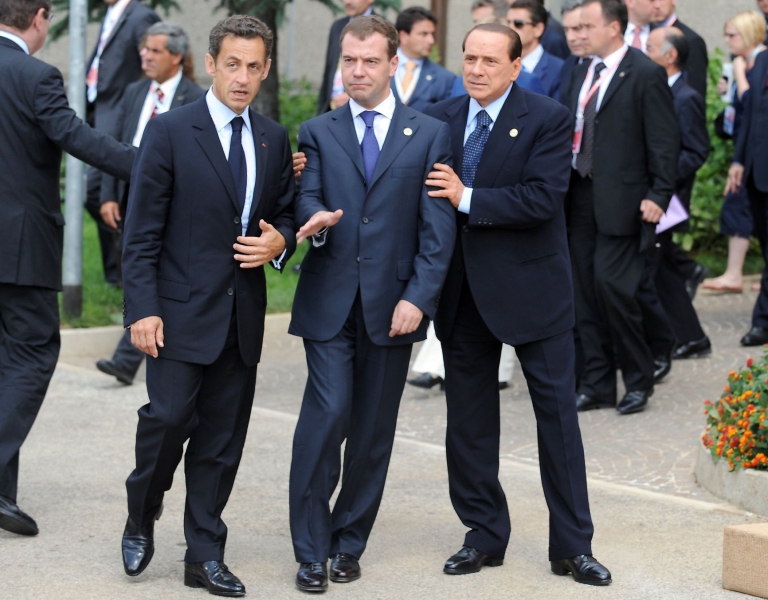
According to official Rosstat data, 17.6 million Russians live on less than 13,500 rubles ($200) per month. Such a Russian would have to save for 24 years to earn a Romanée-Conti 2003 magnum without spending a penny on food and shelter. While the super-profits from the “national wealth” go to Gazprom contractors via opaque purchases, their owners spend more on wine in a couple of hours than many Russian citizens can earn in a lifetime.

